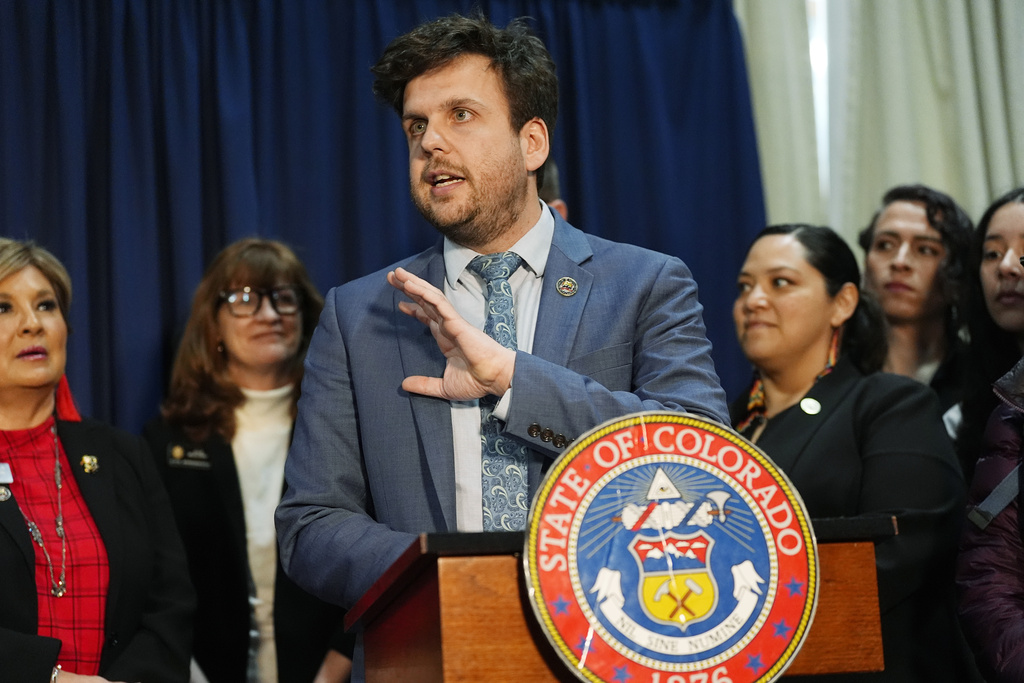Evictions provide insight into America’s rental housing crisis: In 2022, more than half of all renters spent more than a third of their income on housing, and millions of renters are evicted each year for failing to pay their rent.
When tenants are evicted from their homes, the consequences can be devastating. Families may lose their belongings when they are piled on the sidewalk or may not be able to afford the eviction fee. Children may have to change schools, and studies show that evictions often lead to job loss and depression.
The most recent eviction data, based on court records, suggest that 3.6 million eviction cases were filed in 2018, or 7.8 per 100 renter households. These figures, from Princeton University’s Eviction Lab, are considered the best available, but they are far from enough to paint a complete picture.
Court records for eviction cases vary from county to county and typically don’t contain much information other than names and addresses. Crucially, they usually don’t describe the final outcome of the legal process. And court records refer only to eviction cases that are brought in court, not to informal evictions that take place outside of the court process, such as when a property owner simply changes the locks.
“There’s virtually no information on things that might happen outside the court system, like informal evictions, where maybe it’s just a threat and then the person moves out,” says Jill Naamane, director of the U.S. Government Accountability Office and lead author of a recent report on the limitations of eviction data.
“Evictions are called different things in a lot of places. There are orders about this and complaints about that, and even if you understand all of those different nuances in thousands of places, you still may not have a really good data set.”
Researchers and housing activists say policymakers need better information on evictions to make meaningful progress in solving the nationwide affordable housing crisis. Many of them are calling on the federal government to collect and standardize the disparate data and provide demographic information on the renters and property owners affected by evictions.
(READ MORE: Local groups push for more eviction prevention funding in Chattanooga)
Data collection
The U.S. Department of Housing and Urban Development collects data on renters moving out of public housing, but not information on people being evicted from private housing. In 2020, Congress directed the agency to study the feasibility of creating an eviction database, but four years later, it still doesn’t exist.
In the absence of a federal database, the Eviction Lab has become one of the primary sources of information on evictions. But the group relies on court records, and while it has compiled more than 99 million eviction records and 30,000 county reports of eviction filings between 2000 and 2018, it does not have reliable data for the counties where a third of renters live.
“In one county, they’re using software and tracking it digitally, and in the county next door, it can literally be completely different,” said Camila Vallejo, a researcher at the Eviction Lab. “It’s really difficult to get that data out there when all the courts aren’t using the same resources or instructions.”
Property owners typically attempt to evict tenants for nonpayment of rent or other violations of the lease agreement. Owners initiate the eviction process by notifying the tenant and then filing a lawsuit in a local court.
Although court records can be used to determine how often property owners initiate this procedure, they do not adequately determine the actual number of evictions.
For example, it is not always clear from the records whether the court ruled in favor of the landlord and ordered the tenants to move out. A tenant may move out voluntarily after receiving an eviction notice, or the owner may withdraw the records after reaching a payment agreement with the tenant. Even after an eviction judgment, a landlord may allow a tenant to stay under certain conditions.
Property owners can also initiate an informal eviction action outside of the court system, for example by changing the locks on the front doors or turning off utilities.
(READ MORE: General Assembly tightens eviction laws for Tennessee renters)
Carl Gershenson, director of the Eviction Lab, said the group is working to fill some of those gaps.
“A lot of this is linking the eviction records with other address data sources,” Gershenson said. “We’re close to getting a good estimate of how many people will ultimately be evicted after receiving these records.”
Advances in artificial intelligence could support such efforts, says Tim Thomas, director of the Urban Displacement Project at the University of Toronto and the University of California, Berkeley.
Thomas noted that even the limited data currently available on evictions has had profound policy implications. For example, it helped the U.S. Centers for Disease Control and Prevention issue a moratorium on evictions during the pandemic, which reduced the number of eviction filings by more than half in 31 cities tracked by the Eviction Lab.
“The pandemic added fuel to the fire,” Thomas said. “The data we had before the pandemic inspired the CDC moratorium. Without that data, we would not have been able to respond as strongly as we did.”
 Colorado Gov. Jared Polis speaks after signing a eviction protection bill at the state Capitol in Denver on April 19. The eviction protection bill is one of the most comprehensive tenant-friendly laws in recent years and the result of 18 months of legislative and organizing work. (AP Photo/David Zalubowski)
Colorado Gov. Jared Polis speaks after signing a eviction protection bill at the state Capitol in Denver on April 19. The eviction protection bill is one of the most comprehensive tenant-friendly laws in recent years and the result of 18 months of legislative and organizing work. (AP Photo/David Zalubowski)MOST AFFECTED
Recent studies on the demographics of evictions have also influenced policy, advocates say. Several studies and reports show that black women, infants and young children are disproportionately affected by evictions.
Such research has helped lead to the enactment of state laws guaranteeing tenants the right to an attorney during eviction proceedings. The National Coalition for a Civil Right to Counsel estimates that 83 percent of landlords have an attorney during eviction proceedings, compared to 4 percent of renters. It has also led to so-called “just cause” laws that limit the reasons a landlord can evict a tenant or refuse to renew a lease.
(READ MORE: Chattanooga public safety, eviction prevention groups, etc. may get more money)
Colorado Democratic state Rep. Javier Mabrey, an attorney specializing in evictions who sponsored a measure to impose emergency legislation signed into law by Democratic Gov. Jared Polis in April, said he was inspired by a personal experience: When he was 15, a landlord evicted him, his brother and his permanently disabled mother, leaving them homeless.
He told Stateline that he won the support of House Speaker Julie McCluskie, a Democrat, by bringing her to eviction court after she voted against the measure last year.
“This year, after she was in eviction court with me, it was one of the bills she highlighted in her opening speech,” Mabrey said. “When you pull back the curtain on the eviction process, the need for these protections for renters becomes clear.”
Read more at Stateline.org.
 Colorado State Rep. Javier Mabrey speaks before Colorado Gov. Jared Polis signs a tenant eviction protection bill at the State Capitol in Denver on April 19. The tenant eviction protection bill is one of the most comprehensive tenant-friendly bills in recent years and the result of 18 months of legislative and organizing work. (AP Photo/David Zalubowski)
Colorado State Rep. Javier Mabrey speaks before Colorado Gov. Jared Polis signs a tenant eviction protection bill at the State Capitol in Denver on April 19. The tenant eviction protection bill is one of the most comprehensive tenant-friendly bills in recent years and the result of 18 months of legislative and organizing work. (AP Photo/David Zalubowski)
